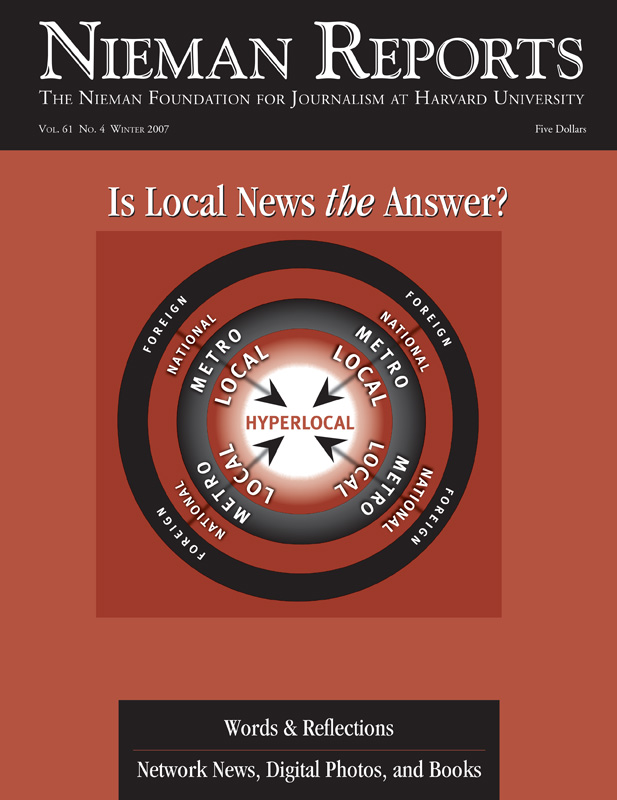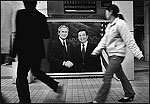I met Hal Burrows like I meet a lot of people, when he called me over and wanted to talk about my cameras. Ours was a usual back-and-forth conversation, with him asking me some questions about technical aspects of my cameras, until he mentioned that he’d been to China for stem cell treatments. When I heard him mention this recent medical trip, my ears perked up. Suddenly, I was thinking about how his story would be a terrific one for us to tell in The Post and Courier, our local newspaper in Charleston, South Carolina.
RELATED ARTICLE
See Tony Bartelme’s story “Going to China to Report Local Stories” for more about how and why we got the go-ahead to travel to China »Against the odds—given our midsized paper’s newsroom budget and our emphasis on local news coverage—reporter Tony Bartelme and I received a go-ahead from Executive Editor William Hawkins. When Hal headed back to China for his second round of stem cell treatments, we went with him.
Once there, my job was to tell the visual story of Hal’s trip. My plan for doing this was to bring back compelling photographs from this Charleston man’s medical journey in this distant, and in many ways exotic, place as he tried what some regard as a risky treatment in a hospital that does not adhere to American standards of medical practice.
Hal had only one stem cell injection while we were in China. Even though this moment was the one I felt we’d traveled around the world to document, the hospital officials did not want me to photograph the procedure. We knew this before we’d left on the trip, but figured we could find a way to make it happen once we were there. In fact, just before the procedure was going to take place, I found out that the doctor who would be injecting the stem cells into Hal’s spine was very interested in photography; he was very familiar with my camera but had never seen one, so we talked a bit about it. He did not seem at all bothered that we were there, and after we talked he agreed to let a nurse take photos of the procedure with my camera. I was not allowed in the room.
Other days when I’d been at the hospital, I’d tried to be very inconspicuous, keeping my camera in my backpack. But on this day I shot some photos of Hal in the hallway outside the room where the procedure would take place. After the procedure, the nurse who took the photos gave me the camera back. All seemed to be going well until I saw the panic-stricken eyes of another nurse as I was photographing Hal being rolled into his room. She confronted me, and I told her we were leaving. We rushed out of Hal’s room and were met at the elevator by several hospital and stem cell company employees. They asked if I took pictures, and I told them I did. A long pause followed. As the elevator door opened, packed with passengers staring at us, I thought about escaping into the elevator and was about to when one of the stem cell company managers said, “Just go.” I held my breath as we passed the guards on the way out of the hospital and chased down the first cab we saw and headed back to the hotel. I promptly sent my photos back to the newspaper.
Alan Hawes is a photographer at The Post and Courier in Charleston, South Carolina.

Burrows, right, waits outside the room where the stem cell injections are done. Photo by Alan Hawes/The Post and Courier.

Hal Burrows rests in his room at Nanshan Hospital in Shenzhen, China after receiving a stem cell injection. A floor of the government-owned hospital is occupied by the Beike Biotech Company, which specializes in stem cell treatments for foreigners. Photo by Alan Hawes/The Post and Courier.
His hospital room was stark, with nothing to suggest to a viewer that he was in China. There was no medical equipment in the room—only a bed, sink, window and bathroom. It looked like my college dorm, and Hal used it like a hotel room. He was an in-patient despite getting stem cell treatments only once a week. By communicating the room’s starkness, I thought I might be able to show a contrast between Chinese and U.S. hospitals. —A.H.

Burrows explores a market near the hospital where he was waiting for stem cell injections. Photo by Alan Hawes/The Post and Courier.
When Hal decided to venture out of the hospital, I had an easier time making the visual story come alive. Hal loved to get out into the city, where he would bravely navigate the streets in his wheelchair and interact with the local residents. This was a most unusual sight in China, since the only time people are seen in wheelchairs is inside of a hospital. Tony and I followed Hal around the streets on two different days. My goal was simple: to place Hal in China and let the pictures illuminate who he is, something that happened when he hitched a ride on the back of the motorized bicycle. —A.H.

An employee works on parts at the Quoizel plant in Shenzhen, China. Quoizel is headquartered in Goose Creek, South Carolina, but moved most of its manufacturing to China so it can remain competitive because of the cheap labor. Most of the manufacturing in the plant is done by hand. Photo by Alan Hawes/The Post and Courier.

A Quoizel employee moves boxes of lighting fixtures around a storeroom at its manufacturing plant in China. The label on the box shows a direct link back to the Charleston area. Photo by Alan Hawes/The Post and Courier.
After we finished working on Halís story, Tony and I looked for other ìlocalî angles to stories we could do in Chinaóand found several to pursue. With a story we did about a South Carolina-based manufacturing plant located in Shenzhen, for example, I took pictures of the process we observed at the factory and then took photographs of the goods made there that are stored in the warehouse in South Carolina. In China I was surprised at how much of the factory work is done by hand. Large machines were not in use in the production process we observed. Instead, workers used hand tools, and I focused on the labor-intensive atmosphere. I also took pictures of some of the executives from South Carolina at their office in China, but the most interesting photos came from what was going on with the workers. —A.H.

A photo of President George Bush and Chinese President Hu Jintao shaking hands in Beijing on November 20, 2005 was copied to make this painting in the Dafen oil painting village in Shenzhen, China. This image appeared in The Post and Courier as part of Bartelme’s reporting to demonstrate China’s pride in its business ties to the United States. Photo by Alan Hawes/The Post and Courier.



